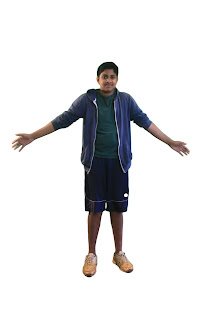 I am a kind of person who always wants to stay out of stressful situations and just have fun with my friends. You might think that having fun with my friends all the time might not be a good thing, but I do my work when I need to and try to find shortcuts while i'm doing it but not in a way in which it would hurt the quality of my work. Im also a person who just doesn't like doing anything that I feel wont help me or others. My hobbies are gaming, fishing, and watching funny TV shows. An imperfection that I have for one is definitely procrastination. Overall Im just someone who likes to have lots of fun.
I am a kind of person who always wants to stay out of stressful situations and just have fun with my friends. You might think that having fun with my friends all the time might not be a good thing, but I do my work when I need to and try to find shortcuts while i'm doing it but not in a way in which it would hurt the quality of my work. Im also a person who just doesn't like doing anything that I feel wont help me or others. My hobbies are gaming, fishing, and watching funny TV shows. An imperfection that I have for one is definitely procrastination. Overall Im just someone who likes to have lots of fun. The way Im planning to exaggerate the character traits while animating is by using the puppet warp tool in a way that it shows the character's emotions. For example, if the character is sad, I can exaggerate her physical reaction to being sad which might be crying or even bawling on the ground. The reason why animation is so great is because it can bring inanimate objects to life or make your characters do things they cant in real life. For instance, if the character is very happy and or excited then I can bring the viewer to the character's happy place which can be filled with things that you wouldn't be able to film in real life, like unicorns or rainbows.
The way Im planning to exaggerate the character traits while animating is by using the puppet warp tool in a way that it shows the character's emotions. For example, if the character is sad, I can exaggerate her physical reaction to being sad which might be crying or even bawling on the ground. The reason why animation is so great is because it can bring inanimate objects to life or make your characters do things they cant in real life. For instance, if the character is very happy and or excited then I can bring the viewer to the character's happy place which can be filled with things that you wouldn't be able to film in real life, like unicorns or rainbows.The first thing we had to do in our GIF was to set the size of the document, which is a really important part of the process as it will downsize the images so that they wouldn't overload the computer. Next we had to use the quick selection tool to get your body separate from the rest of the picture . After this we would make a background layer which be the backdrop of your animation. After this is done, you may then open up your animation workspace. Mr. Sanderl stated that in GIFs there is a flow of movement in other words a seamless loop, you should not be able to see the beginning of the video or the end but rather have them blend in to each other. You have to move your character from out of the frame, into the frame by slow movement in which you create one frame for each little move you do on your character. After the character has reached the middle of the frame then you use the puppet warp tool to animate the character gif to do whatever you want. After this movement with the puppet warp is done you may exit the frame and your done with a short GIF.

















